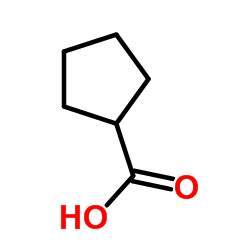8-Cyclopentyl-1,3-dimethylxanthine

8-Cyclopentyl-1,3-dimethylxanthine structure
|
Common Name | 8-Cyclopentyl-1,3-dimethylxanthine | ||
|---|---|---|---|---|
| CAS Number | 35873-49-5 | Molecular Weight | 248.28100 | |
| Density | 1.332g/cm3 | Boiling Point | 513.1ºC at 760mmHg | |
| Molecular Formula | C12H16N4O2 | Melting Point | 250-252ºC | |
| MSDS | Chinese USA | Flash Point | 264.1ºC | |
Use of 8-Cyclopentyl-1,3-dimethylxanthine8-Cyclopentyl-1,3-dimethylxanthine (Compound 2a) is a selective adenosine A1 receptor antagonist with Kis of 10.9 nM and 1440 nM for A1 receptor and A2 receptor, respectively[1]. |
| Name | 8-cyclopentyl-1,3-dimethyl-7H-purine-2,6-dione |
|---|---|
| Synonym | More Synonyms |
| Description | 8-Cyclopentyl-1,3-dimethylxanthine (Compound 2a) is a selective adenosine A1 receptor antagonist with Kis of 10.9 nM and 1440 nM for A1 receptor and A2 receptor, respectively[1]. |
|---|---|
| Related Catalog | |
| Target |
Ki: 10.9 nM (A1 receptor), 1440 nM (A2 receptor)[1] |
| References |
| Density | 1.332g/cm3 |
|---|---|
| Boiling Point | 513.1ºC at 760mmHg |
| Melting Point | 250-252ºC |
| Molecular Formula | C12H16N4O2 |
| Molecular Weight | 248.28100 |
| Flash Point | 264.1ºC |
| Exact Mass | 248.12700 |
| PSA | 72.68000 |
| LogP | 0.61790 |
| Index of Refraction | 1.607 |
CHEMICAL IDENTIFICATION
HEALTH HAZARD DATAACUTE TOXICITY DATA
|
| Personal Protective Equipment | Eyeshields;Gloves;type N95 (US);type P1 (EN143) respirator filter |
|---|---|
| RIDADR | NONH for all modes of transport |
| WGK Germany | 3 |
| RTECS | XH5093600 |
| HS Code | 2933990090 |
| Precursor 2 | |
|---|---|
| DownStream 0 | |
| HS Code | 2933990090 |
|---|---|
| Summary | 2933990090. heterocyclic compounds with nitrogen hetero-atom(s) only. VAT:17.0%. Tax rebate rate:13.0%. . MFN tariff:6.5%. General tariff:20.0% |
|
Cold plasma treatment for the microbiological safety of cabbage, lettuce, and dried figs.
Food Microbiol. 51 , 74-80, (2015) Microwave-powered cold plasma treatment (CPT) was evaluated as a means to improve the microbiological safety of fresh vegetables and dried fruits. The CPT at 900 W, conducted for 10 min using nitrogen... |
|
|
Cerebrospinal fluid (CSF) CD8+ T-cells that express interferon-gamma contribute to HIV associated neurocognitive disorders (HAND).
PLoS ONE 10(2) , e0116526, (2015) HIV associated neurocognitive disorders (HAND) continue to affect cognition and everyday functioning despite anti-retroviral treatment (ART). Previous studies focused on mechanisms related to monocyte... |
|
|
Nitric Oxide Down-Regulates Topoisomerase I and Induces Camptothecin Resistance in Human Breast MCF-7 Tumor Cells.
PLoS ONE 10 , e0141897, (2015) Camptothecin (CPT), a topoisomerase I poison, is an important drug for the treatment of solid tumors in the clinic. Nitric oxide (·NO), a physiological signaling molecule, is involved in many cellular... |
| 8-Cyclopentyltheophylline CPT |
| 8-Cyclopentyl-1,3-dimethylxanthine |
| 8-Cyclopentyl theophylline |
| Theophylline,8-cyclopentyl |
| cyclopentyl teophylline |
| 1,3-dimethyl-8-cyclopentylxanthine |
| Xanthine,8-cyclopentyl-1,3-dimethyl |
| 8-cyclopentyl-1,3-dimethyl-3,7-dihydro-purine-2,6-dione |
 CAS#:5440-00-6
CAS#:5440-00-6 CAS#:3400-45-1
CAS#:3400-45-1